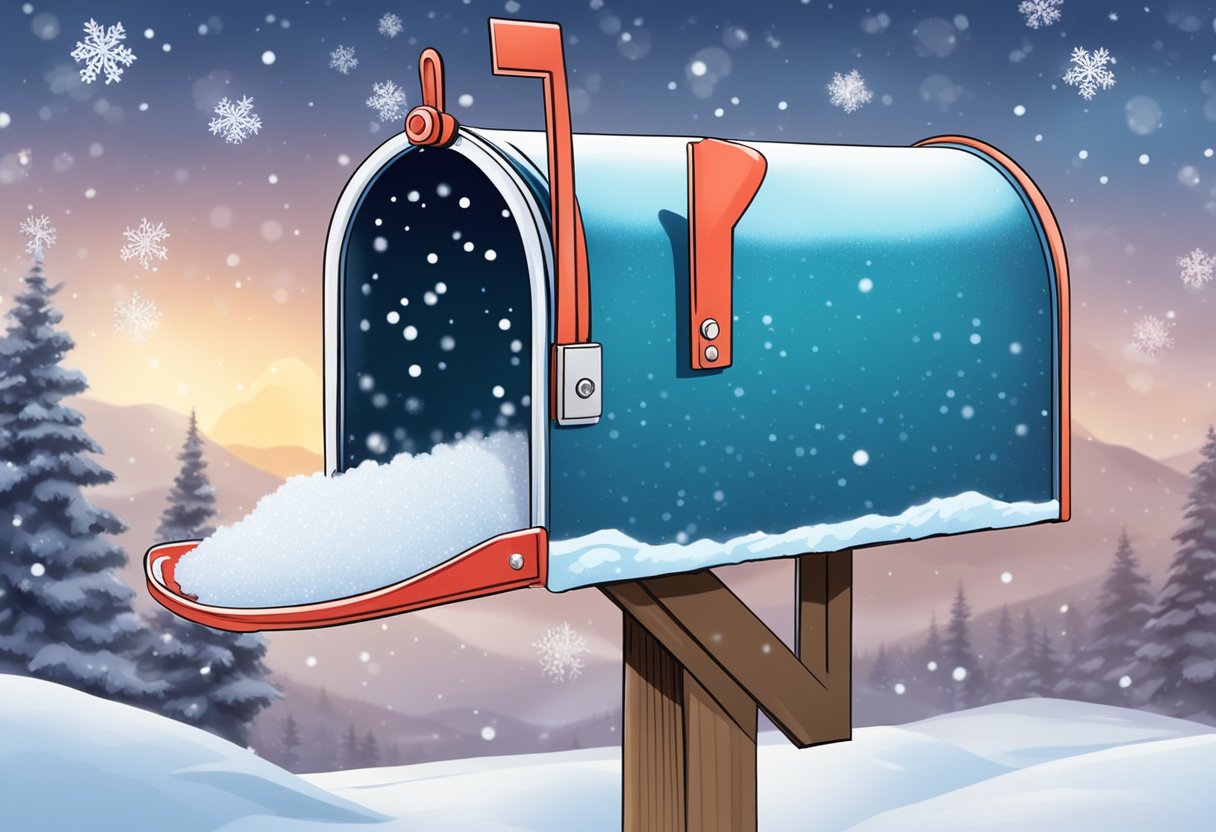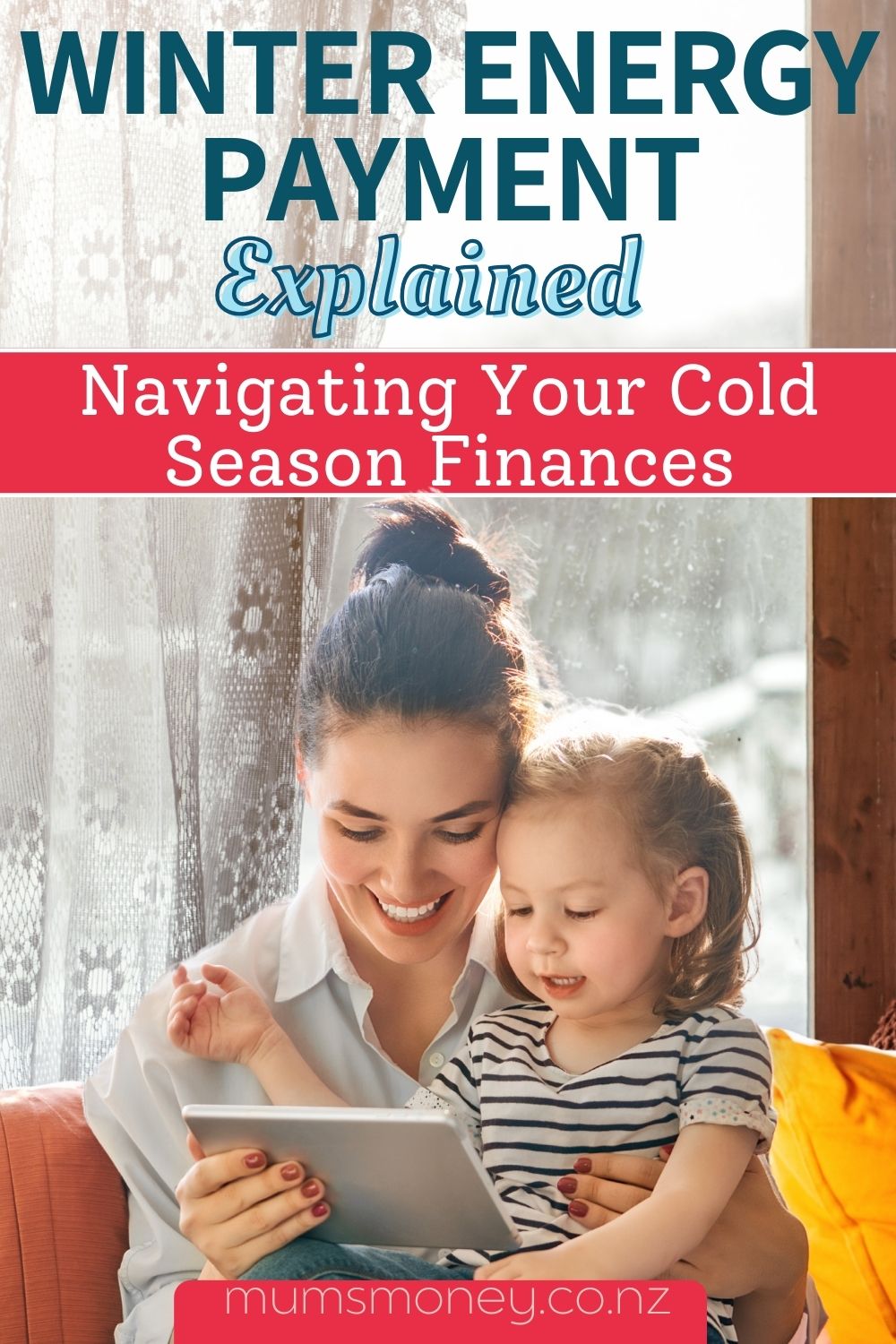As the temperature drops, keeping your home warm becomes crucial, and the cost associated with it can be a concern.
That’s where the Winter Energy Payment comes into play—a financial boost to help you manage the cost of heating during the colder months.
If you’re eligible, this payment is made to you automatically along with your other regular payments, so there’s no need for you to apply.

The Winter Energy Payment period typically runs from May to October. During these months, you’ll receive extra funds specifically intended to ease the burden of energy bills.
This is a particularly helpful support scheme for those on a fixed income, such as pensioners and recipients of certain government benefits.
The Winter Energy Payment isn’t just a one-off— it recurs every winter, offering you consistent support annually.
It’s like a financial cosy blanket, wrapping you up in a bit of comfort when the chill of winter bites.
Keep in mind that the specific details and rates can vary, so it’s worth staying updated on your entitlements and ensuring you’re receiving what you should as part of this initiative.
Overview of Winter Energy Payment

The Winter Energy Payment scheme is a government initiative in New Zealand designed to assist you in managing the increased cost of keeping your home warm during the colder months.
Purpose and Benefits
The payment aims to ease your cost of living over winter by providing extra financial support.
This support is crucial for you if you receive New Zealand Superannuation, a main benefit, or a Veteran’s Pension, helping to ensure you have a warm home without the stress of additional expenses.
Critical Time Frame
You’ll receive the Winter Energy Payment automatically between 1 May and 1 October each year, provided you’re eligible.
There’s no need for you to apply, which simplifies the process and ensures you don’t miss out on the benefit during this critical time frame for keeping your home heated.
Eligibility Criteria

To nab the Winter Energy Payment, you’ve got to meet certain criteria. If you’re on the right benefit or fit the age and family profile, you could be seeing extra cash to warm up your winter.
Qualifying Benefits
You’re in line for the Winter Energy Payment if you’re already on a main benefit. Here’s a quick look at what could make you eligible:
- NZ Super: Are you getting New Zealand Superannuation (NZ Super)? If that’s a yes, the payment should automatically swing your way.
- Jobseeker Support: On this benefit? Then you’re all set.
- Veteran’s Pension: If you’re a recipient, you’ll get the payment along with your pension.
- Support for dependent children: Got kids under your wing? That’ll qualify you if you’re receiving a main benefit that includes them.
Remember, if you’re eligible, you don’t need to lift a finger to apply – it’ll come to you automatically.
Age and Family Status
Your age and whether you’ve got dependents plays a big part too.
- Over the age mark: If you’re aged enough that the NZ Super or the Veteran’s Pension is on your radar, you qualify.
- Families with kids: Got dependent children while on a relevant benefit? The payment is there to help with heating your home when it counts.
Payment Details
In this bit, you’ll get the lowdown on the nitty-gritty of the Winter Energy Payment, from how much dough you’ll get to when you can expect it in your bank.

Payment Rates
If you’re due for the full amount, count on pocketing an extra $31.82 a week to keep your place snug during the chillier season. But, if you’re only eligible for part payment, you’re looking at $20.46 a week.
Just remember, this extra cash is a non-taxable payment, so you can spend every penny on staying warm.
Payment Schedule
No need to ring us up or send a form—this payment is automatic. If you’re eligible, your regular payments will have a little bonus from 1 May to 1 October.
Keep an eye on your payment date, because that’s when the extra funds will drop.
Application Process

If you’re eligible for the Winter Energy Payment to assist with your home heating costs, take note that there is no need to apply.
This is a streamlined process managed by Work and Income, and it’s automatically granted to qualifying individuals.
Work and Income Registration
First things first, make sure you’re registered with Work and Income. If you’re already receiving other payments from them, you’re sorted.
The Winter Energy Payment will arrive alongside your regular funds. No extra paperwork needed—just keep your details up to date.
Required Documentation
There’s no stack of forms to worry about, but it’s crucial to maintain accurate and current information with Work and Income.
Should your circumstances change—maybe you’ve moved house or your living situation has altered—just update your details with them. It’s that straightforward.
Remember, if you decide the Winter Energy Payment isn’t something you want, you have the option to opt-out. Simply get on the horn with Work and Income, and they’ll sort it for you.
For a bit more detail, you might want to visit Work and Income’s comprehensive guide on the subject.
Impact on Individuals and Families
You’re about to see just how the Winter Energy Payment can really make a difference in people’s lives, especially when it comes to managing your home’s warmth and health during the chillier months.
Household Budgeting
With the Winter Energy Payment, you’ll find managing your household budget a bit easier. This payment is designed to help offset the cost of heating your home.
If you’re part of a middle-income family, you know every penny counts, so this extra bit of cash can take some pressure off when the power bills start to climb.
It’s automatically included with your other payments, ensuring you don’t have to fret about applying or missing out. It’s like a little buffer that keeps the heat on without stretching your wallet too thin.
Health and Well-being
Now, let’s talk about your health, particularly during the cold. The extra financial help from the Winter Energy Payment means you can keep your home warmer without skimping.
This is super crucial because a warm home is key in preventing respiratory illnesses that often get worse with the cold.
Health issues can be a real nuisance in winter, and this payment plays a part in keeping you fighting fit. Who knew that staying on top of your heating could mean fewer sniffles and sick days?
Payments for Special Categories
In this section, you’ll find out about specific payments and allowances available for students in tough spots and emergency situations, as well as additional benefits aimed at certain groups who may need a bit extra in their pockets.
Students and Emergency Cases
If you’re a student experiencing financial hardship, you might be eligible for the Jobseeker Support Student Hardship, which provides assistance when you’re in a tight spot financially.
This can be a beacon during in-term or holiday periods when things get rough.
For more extreme cases, where you’re in dire need of urgent help, the Emergency Benefit is at hand to make sure you don’t flounder, especially if you’re not eligible for other payments.
In the event that you need support for essential immediate needs, an Emergency Maintenance Allowance can help you cover these costs.
This is crucial if you’re suddenly faced with unexpected bills and no way to pay them.
Additional Allowances for Specific Groups
There’s more help on the horizon if you fall into certain categories.
Young parents and youth may access the Young Parent Payment and Youth Payment, both designed to support you if you’re responsible for a child or living away from home for various reasons.
For those with health conditions or disabilities that make it tough to work, the Supported Living Payment recognises your unique challenges, offering an extra layer of financial support to help manage your living costs more comfortably.
Government Initiatives & Policies
You’ve probably heard about the government’s effort to tackle the chill of winter head-on.
One of the keystones of this endeavour is the Winter Energy Payment, part of a broader strategy aimed at supporting low and middle-income families.
Best of all, it’s directly linked to the Families Package, so let’s break down what you need to know.
Families Package Overview
Within the Families Package, the Winter Energy Payment stands out as a notable initiative. It’s an additional sum specifically intended to help you cover the higher energy costs during the colder months – no application necessary.
If you’re eligible, it’ll pop up in your account automatically with your regular payments.
For single people without children, there’s an extra $20.46 per week, and for couples or families with kids, an extra $31.82 per week ensures everyone keeps cosy from 1 May to 1 October.
Carmel Sepuloni, the Minister for Social Development, champions the Winter Energy Payment to assist over a million people throughout the winter period, reflecting the government’s commitment to your well-being in the face of dropping temperatures.
Future Prospects
Looking ahead, the government is eager to keep evaluating and responding to the energy needs of families.
Adjustments to the Families Package, including the Winter Energy Payment, could see increases to further support your household.
It’s all part of the plan for social development. They want to ensure that policies evolve with the needs of low and middle-income families so that you can face each winter with one less worry on your mind.


